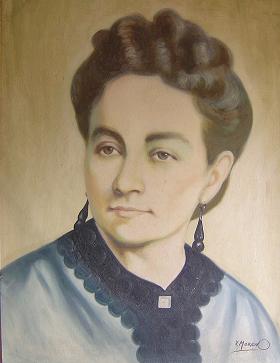 The birth of a babe is always a foremost event in any family. That's why the Betancourt-Agramonte felt such an immeasurable happiness on December 14th, 1832; when Ana Betancourt was born. She was the sixth daughter of Diego A. Betancourt Gutiérrez and Ángela Agramonte Aróstegui.
The birth of a babe is always a foremost event in any family. That's why the Betancourt-Agramonte felt such an immeasurable happiness on December 14th, 1832; when Ana Betancourt was born. She was the sixth daughter of Diego A. Betancourt Gutiérrez and Ángela Agramonte Aróstegui.
Ana Betancourt Agramonte spent her childhood and adolescence in Santa Maria del Puerto del Príncipe today Camagüey, Cuba, in a conventional environment of a Criolla wealthy family. She received a training in religion, sewing, embroidery, music and home economy. She stood out for her vivaciousness and exquisiteness.
II
Twenty two years later the life of the young woman began to change dramatically when she got married on August 17, 1854, with Ignacio Mora de la Pera, an educated man of modern ideas.
Ignacio had helped Ana to free herself from ignorance in which the woman of those days lived and to get rid of the backwardness of the local education. He taught her foreign languages, grammar and history; he wanted not only a passionate wife, but also an intelligent and cultivated companion.
Ana did not go to college, but she had gained a lot of knowledge next to her husband, but also she had felt in her own flesh the exploitation and discrimination against women.
III
Ana turned her house in Camagüey into a center of conspiracy against the Spanish colonialists, till she left hometown on December 4, 1868 to meet her husband, and share the hardships of the liberating forest.
Ignacio Mora was one of the first patriots who up rose against the Spanish slavery and colonialist system, after the uprising of the Camagüeyans occurred in Las Clavellinas, near Santa María del Puerto del Príncipe, on November 4, 1868.
According to historian Manuel Pena Benavides, when Ana joined the struggle, she was not a youngster: she was near to turn 36 years old and the conditions in which the rebels lived in the forest and the swamp were very difficult for a lady who belonged to the upper class. So,
"... on March, 1869 she was already living in Guáimaro, together with his husband who got sick".
Both knew about the celebration of the Constituent Assembly of the Republic of Cuba in Arms. It was a secret meeting, but the most important insurgents knew what would happen.
IV
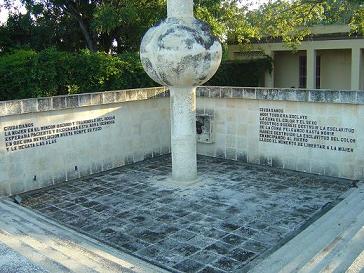 On April 14, 1869 — a few days after the Constituent Assembly — in a meeting held in an alley on the Square of Guáimaro, the Camagüeyan patriot, requests to grant equality, political and economic rights for the women.
On April 14, 1869 — a few days after the Constituent Assembly — in a meeting held in an alley on the Square of Guáimaro, the Camagüeyan patriot, requests to grant equality, political and economic rights for the women.
"Citizens:
In the dark and calm corner of a house, the Cuban woman was waiting patient and resigned the sublime hour in which a just Revolution breaks her yoke, and unties her wings. Everything was a slave in Cuba: the cradle, the race, the sex. You want to destroy the slavery of the cradle, fighting up till death if it is necessary.
The slavery of races does not exist any more, you have emancipated the slave.
When the time to free the woman comes, the Cubans who have thrown down the slavery of the cradle and the slavery of the color will also dedicate their generous soul to conquest the rights of those who today are their sisters of charity, those who tomorrow will be, like yesterday, their model partners".
Manuel Benavides Pena assures that although Ana Betancourt did not participate in the meeting of the patriots, in another stage she did claimed the rights of the woman. In the Constituent Assembly of Guáimaro only 15 elected deputies took part; neither Ana nor her husband were delegates to the convention.
Once Carlos Manuel de Céspedes, the Father of the Homeland, told this precursor of the social and political rights of the women in Cuba:
"When the Cuban historian write on this decisive day of our political life, will mention how you, going ahead of your time asked for the emancipation of the woman".
After the Constituent Assembly, Ana Betancourt decides to stay in Guáimaro, but the Spanish army is determined to take control of the city, then the people prefer to burn all the buildings and the houses before leaving them in hands of the soldiers.
V
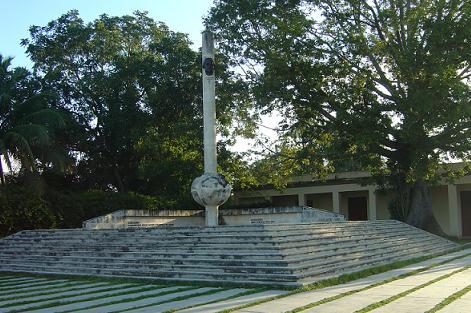 Together with her husband who was seriously sick, Ana leaves the city and goes away to live to a rebel camp, but on July 9, 1871, they were taken by surprise by the hostile forces. She was captured by the enemy and is separated from her husband, to whom she requests with tenderness but with steadfastness:
Together with her husband who was seriously sick, Ana leaves the city and goes away to live to a rebel camp, but on July 9, 1871, they were taken by surprise by the hostile forces. She was captured by the enemy and is separated from her husband, to whom she requests with tenderness but with steadfastness:
— For me and for you, fights for freedom.
On November 3, 1868, the authorities decide to deport this worth woman to Spain, where she spend all kinds of deprivations and pains, till she receives the tragic news that her husband Ignacio Mora has died.
She never stopped fighting for the independence of Cuba and helped in Madrid, to every Cuban patriot who was deported.
Ana met José Martí, received letters from him and admired him. Of him she wrote:
"Through his vibrant words, he transmitted his feelings to the soul of his listeners... "
On February 7, 1901, when she was preparing her return to Cuba, she dies in Madrid, Spain, from a fulminating bronchopneumonia at the age of 69. Her remains were in that European country until 1968. Thanks to certain moves done by Celia Sánchez Manduley, they were set in the pantheon of the Revolutionary Armed Forces, in the Cemetery Colón in Havana.
From that moment the idea of moving her remains to Guáimaro, for being in the Camagüeyan city where Ana Betancourt delivered the famous speech, was studied.
On April 10, 1979 where the Cuban nation celebrated the 110th anniversary of the Constitution of Guáimaro, Manuel Pena Benavides told Blas Roca Calderío, in that time President of the Parliament, the need to erect a mausoleum to perpetuate the memory of Ana Betancourt. Three years later, on April 10, 1982, the mausoleum was inaugurated.
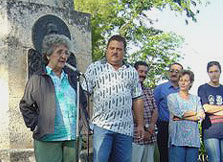 Bachelor Maria del Carmen Portuondo, sees the mausoleum as a universal symbol of the women's aspirations:
Bachelor Maria del Carmen Portuondo, sees the mausoleum as a universal symbol of the women's aspirations:
"To have a mausoleum dedicated to Ana Betancourt is wonderful. The visits to the museum of the Constitution end up precisely in this place, that is a beautiful monumental complex. All the visitors: children, adolescents, young people, adults, both national and foreign, are interested in the monument that recalls the birth and death of Ana Betancourt".
As a tradition: all the people that just get married set a wreath to the celebrated Camagueyan.
In the city cradle of the Cuban constitution, relatives of Five antiterrorist fighters imprisoned in the United States claimed their immediate release.
Today when million of women in the world demand, that "a new revolution breaks their yoke of oppression and unties their wings... ", the Camagüeyana Ana Betancourt de Mora, emerges as a woman who went ahead her society; a combatant of her time and of all the times.
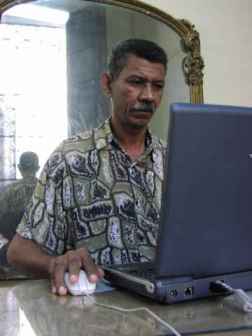
Lázaro David Najarro Pujol, escritor y periodista.
Labora en la emisora Radio Cadena Agramonte de Camagüey.
Autor de los libros Emboscada y Tiro de Gracia,
ambos publicados por la Editorial Ácana de Camagüey.
Editor del Sitio Web: http://camaguebax.awardspace.com/




![]() Cuba. Una identità in movimento
Cuba. Una identità in movimento![]()